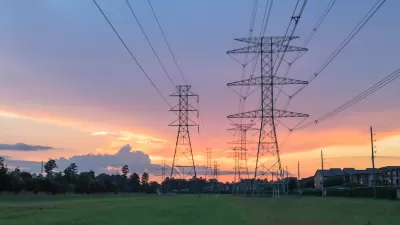According to the Energy Information Agency's (EIA) May outlook, expect coal-generated electric power to drop a full 15% for 2012 while natural gas generated power increases by 24%. Coal dropped from 45% to 36% as the source of U.S. power generation.
In addition to the cheapest natural gas prices in a decade, Stephen Lacey credits environmentalists' successful efforts to halt new coal plants from opening and to shutter existing ones, and additional challenges facing America's oldest fossil fuel energy industry.
"The U.S. coal industry is facing major headwinds. The current drop in generation is mostly due to competition from natural gas. But there are other factors that will assist in pushing coal out of the electricity mix: An aging fleet of plants, cost-competitive renewables, new clean air regulations, and a strong anti-coal movement are working together to reduce the attractiveness of coal.
"Since 2010, plant operators have announced 106 retirements of coal facilities - representing 13 percent of the U.S. fleet, according to the Sierra Club."
On Feb. 29, Lacey reported on "Nine More Dirty, Aging Coal Plants Set to Close": "So what's going to happen to the lights when all that coal gets phased out? According to a group of forward-thinking power providers, there's already enough unused combined cycle natural gas capacity installed to make up for over 100 GW of closures."
EIA noted a turn-around of sorts in 2013, however, forecasting that "electricity generation from coal will increase by about 4 percent as projected coal prices fall slightly while natural gas prices increase, allowing coal to regain some of its power generation share."
Thanks to Paul Scott
FULL STORY: U.S. Coal Generation Drops 19 Percent In One Year, Leaving Coal With 36 Percent Share Of Electricity

Alabama: Trump Terminates Settlements for Black Communities Harmed By Raw Sewage
Trump deemed the landmark civil rights agreement “illegal DEI and environmental justice policy.”

Planetizen Federal Action Tracker
A weekly monitor of how Trump’s orders and actions are impacting planners and planning in America.

Why Should We Subsidize Public Transportation?
Many public transit agencies face financial stress due to rising costs, declining fare revenue, and declining subsidies. Transit advocates must provide a strong business case for increasing public transit funding.

Understanding Road Diets
An explainer from Momentum highlights the advantages of reducing vehicle lanes in favor of more bike, transit, and pedestrian infrastructure.

New California Law Regulates Warehouse Pollution
A new law tightens building and emissions regulations for large distribution warehouses to mitigate air pollution and traffic in surrounding communities.

Phoenix Announces Opening Date for Light Rail Extension
The South Central extension will connect South Phoenix to downtown and other major hubs starting on June 7.
Urban Design for Planners 1: Software Tools
This six-course series explores essential urban design concepts using open source software and equips planners with the tools they need to participate fully in the urban design process.
Planning for Universal Design
Learn the tools for implementing Universal Design in planning regulations.
Caltrans
Smith Gee Studio
Institute for Housing and Urban Development Studies (IHS)
City of Grandview
Harvard GSD Executive Education
Toledo-Lucas County Plan Commissions
Salt Lake City
NYU Wagner Graduate School of Public Service





























